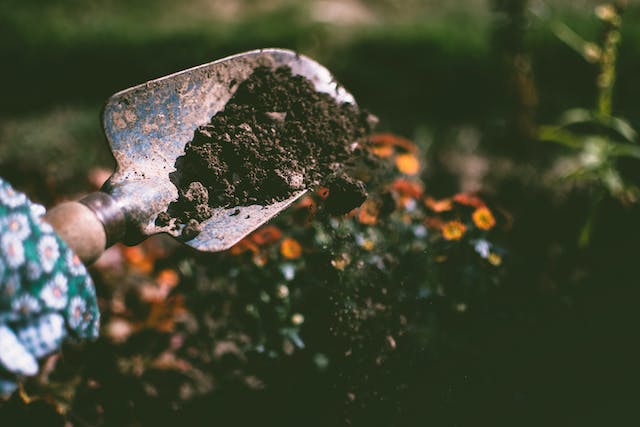Looking for the perfect soil for your spider plant? Look no further! Spider plant soil plays a vital role in the plant’s overall health and growth. But don’t worry, we’ve got you covered with all the essential information and solutions you need.
In this article, we’ll explore the importance of spider plant soil and provide you with practical tips for choosing the right type. Whether you’re a new or experienced spider plant parent, understanding the significance of proper soil will help you nurture your plant and ensure its lush and vibrant foliage.
So, let’s dive in and explore the world of spider plant soil together!
The Ultimate Guide To Spider Plant Soil: Tips For Optimal Growth
Spider plants (Chlorophytum comosum) are popular houseplants known for their attractive foliage and air-purifying properties. To keep your spider plant thriving, it’s essential to provide it with the right soil conditions.
In this article, we will delve into the world of spider plant soil, exploring its composition, characteristics, and how to create the perfect environment for your plant to flourish.
Understanding Spider Plant Soil Requirements
The type of soil you choose for your spider plant can greatly influence its growth and overall health. Spider plants prefer well-draining soil that retains moisture without becoming waterlogged.
Additionally, the soil should be rich in nutrients to support optimal growth. Let’s explore the key factors to consider when selecting or preparing soil for your spider plant:
1. Drainage
Good drainage is crucial for spider plants as waterlogged soil can lead to root rot and other fungal diseases.
To ensure proper drainage, choose a soil mix that contains perlite, sand, or vermiculite. These components improve soil texture, preventing excess water retention.
2. Moisture Retention
While good drainage is important, spider plants also require soil that retains some moisture. The soil should be able to hold water long enough for the plant to absorb it.
Look for a soil mix that contains organic matter, such as peat moss or compost, which helps retain moisture without becoming overly saturated.
3. Nutrient Content
A nutrient-rich soil promotes healthy growth and vibrant foliage in spider plants. Look for a potting mix that includes organic matter, such as compost or well-rotted manure.
These additions provide essential nutrients like nitrogen, phosphorus, and potassium that support overall plant health.
4. pH Level
The pH level of the soil affects nutrient availability to the plant. Spider plants prefer a slightly acidic to neutral soil pH, ideally ranging from 6 to 7.
Test the pH of your soil using a DIY soil pH testing kit or consult your local garden center to ensure it falls within the desired range.
Read More: About Will Stunted Tomato Plants Recover?
Commercial Spider Plant Soil Mixes
If you prefer convenience or lack the time to create your soil mix, there are several commercially available options suitable for spider plants.
These mixtures are specifically formulated to provide the ideal environment for healthy spider plant growth.
Here are a few recommended commercial spider plant soil mixes:
- Miracle-Gro Indoor Potting Mix
- Espoma Organic Potting Mix
- Fox Farm Ocean Forest Potting Soil
- Black Gold Organic Potting Soil
When choosing a commercial soil mix, ensure that it meets the key requirements discussed earlier, such as good drainage, moisture retention, and nutrient content.
Additionally, check if the pH is suitable for spider plants or make necessary amendments to adjust the pH level.
Creating Your Own Spider Plant Soil Mix
If you prefer a DIY approach or want more control over the soil composition, creating your own spider plant soil mix is an excellent option.
Here’s a simple recipe to make a well-balanced soil mixture for your spider plant:
- 1 part peat moss or coco coir
- 1 part perlite or vermiculite
- 1 part compost or well-rotted manure
Combine these ingredients thoroughly to ensure an even distribution of nutrients and moisture-holding capacity.
Adjust the proportions as needed, but ensure good drainage and moisture retention remain balanced.
Repotting Spider Plants
Spider plants typically require repotting every 1-2 years to provide them with fresh soil and additional space for growth.
Here’s a step-by-step guide on how to repot your spider plant:
- Choose a pot that is one size larger than the current one to allow room for growth.
- Gently remove the spider plant from its current pot, taking care not to damage the roots.
- Inspect the roots and trim any dead or damaged sections.
- Place a layer of fresh soil in the new pot, ensuring it’s enough to support the root ball.
- Position the spider plant in the center of the pot and fill the remaining space with soil.
- Press the soil lightly to secure the plant and remove any air pockets.
- Water the repotted plant thoroughly, allowing excess water to drain away.
Spider Plant Soil Maintenance
Caring for spider plant soil involves regular maintenance to provide the best conditions for growth.
Here are some essential soil maintenance tips:
1. Watering
Spider plants prefer to be kept slightly moist but not overly wet. Water the plant thoroughly when the top inch of soil feels dry to the touch.
Avoid overwatering, as it can lead to root rot. Adequate drainage is critical to prevent waterlogged soil.
2. Fertilizing
To keep your spider plant healthy and thriving, regular fertilization is key. Apply a balanced, water-soluble houseplant fertilizer every two to four weeks during the growing season (spring and summer).
Follow the package instructions for the appropriate dilution and dosage based on your spider plant’s size.
3. Soil Aeration
Over time, the soil can become compacted, hindering proper drainage and root growth. Gently loosen the top layer of soil periodically to improve aeration.
You can use a fork or small gardening tool to carefully break up any compacted soil without damaging the roots.
4. Soil pH Monitoring
Regularly monitor the pH level of your spider plant soil to ensure it remains within the desired range. pH testing kits are readily available at garden centers and are easy to use. Adjust the pH as necessary by adding amendments like lime to raise the pH or sulfur to lower it.
Creating the ideal soil environment for your spider plant is crucial for its growth and overall health. Choose or prepare a well-draining soil mix that retains moisture while providing essential nutrients. Commercial soil mixes or DIY options can both be effective, depending on your preferences.
Regular maintenance, including proper watering, fertilizing, and soil aeration, will ensure your spider plant continues to thrive in its optimal soil conditions. With the right soil, your spider plant will reward you with lush foliage and a vibrant presence in your home.
Read More: About French Drain vs Dry Well
Frequently Asked Questions (FAQs)
Spider plants thrive in well-draining soil. A recommended soil mix for spider plants consists of equal parts potting soil, peat moss, and perlite or sand. This combination provides the necessary nutrients and aeration for healthy root growth.
Using regular garden soil for spider plants is not advisable as it tends to retain too much moisture, leading to root rot. Spider plants prefer a soil mix that allows excess water to drain out easily. Therefore, it is best to use a well-draining potting mix specifically formulated for indoor plants.
Spider plants prefer moderate watering. Allow the top inch of soil to dry out before watering again. Overwatering can lead to root rot, while underwatering can cause the leaves to turn brown and dry out. It is important to strike a balance and adjust the watering schedule based on the environmental conditions and the plant’s needs.
Yellowing leaves in spider plants can be a sign of overwatering, underwatering, or inadequate light. Check the soil moisture level and adjust your watering accordingly. Ensure the plant is receiving sufficient indirect sunlight or bright, filtered light. Trimming off the yellow leaves can help redirect the plant’s energy towards new growth.
Spider plants benefit from occasional fertilization to promote healthy growth. Use a balanced, water-soluble fertilizer diluted to half the recommended strength. Apply the fertilizer every 2-3 months during the growing season (spring and summer). Avoid fertilizing during winter when the plant is in its dormant phase.
Spider plants are known for their adaptability and can tolerate low light conditions. However, they prefer bright, indirect sunlight for optimal growth. If placed in low light areas, the plant may produce fewer runners and have slower growth. Consider supplementing with artificial grow lights to ensure sufficient light intensity.
Spider plants are relatively easy to propagate. You can propagate them by using the plantlets, or spiderettes, that emerge from the main plant. Once the spiderettes develop roots, carefully detach them from the parent plant and plant them in a well-draining potting mix. Keep the new plant moist and provide sufficient light for successful propagation.
Spider plants generally prefer slightly crowded root conditions and do not require frequent repotting. However, if you notice the roots becoming too dense or the plant outgrowing its current container, it may be time to repot. Repotting is typically done during the spring, before the growing season begins. Choose a pot only slightly larger than the current one to avoid excessive soil moisture retention.
Final Thoughts
Spider plant soil is an essential factor in a plant’s health and growth. This type of soil should be well-draining, allowing excess water to flow through while retaining enough moisture for the plant’s roots. It should also be rich in nutrients and organic matter to support the plant’s nutritional needs. When choosing spider plant soil, opt for a well-balanced potting mix that provides adequate aeration and drainage.
Additionally, ensure that the soil is not compacted to prevent root rot and promote healthy root development. By selecting the right spider plant soil, you can create an optimal environment for your plant to thrive.
Auto Amazon Links: No products found.
Perfect Plants Christmas Tree Saver 8oz. | Easy Use Xmas Tree Preserver Food | Have Healthy Green Christmas Trees All Holiday Season
$9.97 (as of December 13, 2025 05:07 GMT +00:00 - More info- Product prices and availability are accurate as of the date/time indicated and are subject to change. Any price and availability information displayed on [relevant Amazon Site(s), as applicable] at the time of purchase will apply to the purchase of this product.
Rocky Mountain Goods Christmas Tree Food - 8 oz Tree Preservative - Reduce Needle Drop - Greener Scent - Fir, Pine, Spruce Trees - Extend Tree Life
$9.95 (as of December 13, 2025 05:07 GMT +00:00 - More info- Product prices and availability are accurate as of the date/time indicated and are subject to change. Any price and availability information displayed on [relevant Amazon Site(s), as applicable] at the time of purchase will apply to the purchase of this product.
FirEver Pure Christmas Tree Food | Preserver Additive & Season Extender for Live Xmas Trees | Keep It Green, Reduce Needle-Drop | Miracle Freshness (8 oz)
$14.99 (as of December 13, 2025 05:07 GMT +00:00 - More info- Product prices and availability are accurate as of the date/time indicated and are subject to change. Any price and availability information displayed on [relevant Amazon Site(s), as applicable] at the time of purchase will apply to the purchase of this product.
VICAMB 39.3 Inch Christmas Tree Watering Funnel,Christmas Tree Watering System Device,Long Tree Watering Funnel Spout for Indoor Outdoor Xmas Tree
$16.99 (as of December 13, 2025 05:07 GMT +00:00 - More info- Product prices and availability are accurate as of the date/time indicated and are subject to change. Any price and availability information displayed on [relevant Amazon Site(s), as applicable] at the time of purchase will apply to the purchase of this product.
EZMeetU Christmas Tree Watering Funnel, 47 Inch Flower Shape Adjustable 6 Section Design, Christmas Tree Watering System, Christmas Tree Waterer, Long Funnel Wide Opening Reusable, Plant Watering Tool
$16.99 (as of December 13, 2025 05:07 GMT +00:00 - More info- Product prices and availability are accurate as of the date/time indicated and are subject to change. Any price and availability information displayed on [relevant Amazon Site(s), as applicable] at the time of purchase will apply to the purchase of this product.
Snow Joe Premium Enviro Blend Ice Melt, Green-Coated Deicer Crystals, 50 lb - Safer Melter for Vegetation, Concrete & Metals w/ Anti-Corrosion Calcium Magnesium Acetate
$32.97 (as of December 12, 2025 19:27 GMT +00:00 - More info- Product prices and availability are accurate as of the date/time indicated and are subject to change. Any price and availability information displayed on [relevant Amazon Site(s), as applicable] at the time of purchase will apply to the purchase of this product.
Muddy Mat® Shown on TV Super Absorbent Microfiber Dog Door Mat for Muddy Paws, Non-Slip Washable Pet Rug, Quick Dry Chenille Entryway Carpet, Machine Washable Indoor Outdoor mat, Grey 30"x19"
$24.95 (as of December 12, 2025 19:27 GMT +00:00 - More info- Product prices and availability are accurate as of the date/time indicated and are subject to change. Any price and availability information displayed on [relevant Amazon Site(s), as applicable] at the time of purchase will apply to the purchase of this product.
ivtivfu Rolling Grill Basket, Removable Wooden Handle, 304 Stainless Steel, Nesting BBQ Tools, Smoker Grilling Accessories for Vegetable, Outdoor Cooking Camping, Birthday Gifts for Men Dad Husband
$25.99 (as of December 12, 2025 19:27 GMT +00:00 - More info- Product prices and availability are accurate as of the date/time indicated and are subject to change. Any price and availability information displayed on [relevant Amazon Site(s), as applicable] at the time of purchase will apply to the purchase of this product.
XXXFLOWER Plant Terrarium with Wooden Stand, Air Planter Bulb Glass Vase Metal Swivel Holder Retro Tabletop for Hydroponics Home Garden Office Decoration - 3 Bulb Vase
$18.98 (as of December 12, 2025 19:27 GMT +00:00 - More info- Product prices and availability are accurate as of the date/time indicated and are subject to change. Any price and availability information displayed on [relevant Amazon Site(s), as applicable] at the time of purchase will apply to the purchase of this product.
Zevo Flying Insect Trap Official Refill Cartridges - Fits Both Zevo Trap & MAX Indoor Fly Trap - Authentic Trap+Lock Technology to Catch Gnats, House & Fruit Flys (4 Official Refill Cartridges)
$14.97 (as of December 12, 2025 19:27 GMT +00:00 - More info- Product prices and availability are accurate as of the date/time indicated and are subject to change. Any price and availability information displayed on [relevant Amazon Site(s), as applicable] at the time of purchase will apply to the purchase of this product.











